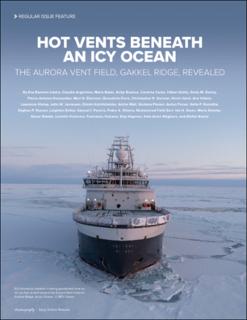| dc.contributor.author | Ramirez-Llodra, Eva | |
| dc.contributor.author | Argentino, Claudio | |
| dc.contributor.author | Baker, Maria | |
| dc.contributor.author | Boetius, Antje | |
| dc.contributor.author | Costa, Carolina | |
| dc.contributor.author | Dahle, Håkon | |
| dc.contributor.author | Denny, Emily Maria | |
| dc.contributor.author | Dessandier, Pierre-Antoine | |
| dc.contributor.author | Eilertsen, Mari Heggernes | |
| dc.contributor.author | Ferré, Benedicte | |
| dc.contributor.author | German, Cristopher R. | |
| dc.contributor.author | Hand, Kevin | |
| dc.contributor.author | Hilário, Ana | |
| dc.contributor.author | Hislop, Lawrence | |
| dc.contributor.author | Jamieson, John W. | |
| dc.contributor.author | Kalenitchenko, Dimitri | |
| dc.contributor.author | Mall, Achim | |
| dc.contributor.author | Panieri, Giuliana | |
| dc.contributor.author | Purser, Autun | |
| dc.contributor.author | Ramalho, Sofia P. | |
| dc.contributor.author | Reeves, Eoghan | |
| dc.contributor.author | Rolley, Leighton | |
| dc.contributor.author | Pereira, Samuel | |
| dc.contributor.author | de Azevedo Ribeiro, Pedro Miguel | |
| dc.contributor.author | Sert, Muhammed Fatih | |
| dc.contributor.author | Steen, Ida Helene | |
| dc.contributor.author | Stetzler, Marie Helene Paula | |
| dc.contributor.author | Stokke, Runar | |
| dc.contributor.author | Victorero, Lissette | |
| dc.contributor.author | Vulcano, Francesca | |
| dc.contributor.author | Vågenes, Stig | |
| dc.contributor.author | Waghorn, Kate Alyse | |
| dc.contributor.author | Bünz, Stefan | |
| dc.date.accessioned | 2022-12-19T15:09:39Z | |
| dc.date.available | 2022-12-19T15:09:39Z | |
| dc.date.created | 2022-12-01T10:07:18Z | |
| dc.date.issued | 2022 | |
| dc.identifier.issn | 1042-8275 | |
| dc.identifier.uri | https://hdl.handle.net/11250/3038671 | |
| dc.description.abstract | Evidence of hydrothermal venting on the ultra-slow spreading Gakkel Ridge in the Central Arctic Ocean has been available since 2001, with first visual evidence of black smokers on the Aurora Vent Field obtained in 2014. But it was not until 2021 that the first ever remotely operated vehicle (ROV) dives to hydrothermal vents under permanent ice cover in the Arctic were conducted, enabling the collection of vent fluids, rocks, microbes, and fauna. In this paper, we present the methods employed for deep-sea ROV operations under drifting ice. We also provide the first description of the Aurora Vent Field, which includes three actively venting black smokers and diffuse flow on the Aurora mound at ~3,888 m depth on the southern part of the Gakkel Ridge (82.5°N). The biological communities are dominated by a new species of cocculinid limpet, two small gastropods, and a melitid amphipod. The ongoing analyses of Aurora Vent Field samples will contribute to positioning the Gakkel Ridge hydrothermal vents in the global biogeographic puzzle of hydrothermal vents | en_US |
| dc.language.iso | eng | en_US |
| dc.publisher | The Oceanography Society | en_US |
| dc.rights | Navngivelse 4.0 Internasjonal | * |
| dc.rights.uri | http://creativecommons.org/licenses/by/4.0/deed.no | * |
| dc.title | Hot Vents Beneath an Icy Ocean: The Aurora Vent Field, Gakkel Ridge, Revealed | en_US |
| dc.type | Journal article | en_US |
| dc.type | Peer reviewed | en_US |
| dc.description.version | publishedVersion | en_US |
| dc.rights.holder | Copyright 2022 The Author(s) | en_US |
| cristin.ispublished | true | |
| cristin.fulltext | original | |
| cristin.fulltext | original | |
| cristin.qualitycode | 1 | |
| dc.identifier.doi | 10.5670/oceanog.2023.103 | |
| dc.identifier.cristin | 2086756 | |
| dc.source.journal | Oceanography | en_US |
| dc.relation.project | Norges forskningsråd: 287364 | en_US |
| dc.relation.project | NASA National Aeronautics and Space Administration: NSSC19K1427 | en_US |
| dc.relation.project | NASA National Aeronautics and Space Administration: NNX16AL04G | en_US |
| dc.relation.project | Norges forskningsråd: 287934 | en_US |
| dc.relation.project | Norges forskningsråd: 223259 | en_US |
| dc.relation.project | ERC-European Research Council: 294757 | en_US |
| dc.relation.project | Norges forskningsråd: 326881 | en_US |
| dc.relation.project | Norges forskningsråd: 274330 | en_US |
| dc.relation.project | Artsdatabanken: Fauna of hydrothermal vents and cold seeps in Norwegian wate | en_US |
| dc.identifier.citation | Oceanography. 2022. | en_US |

